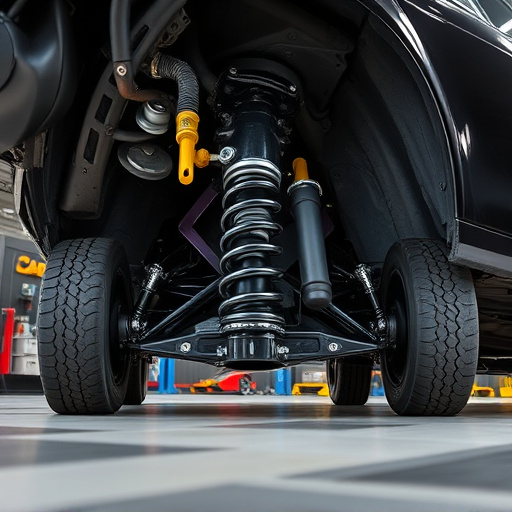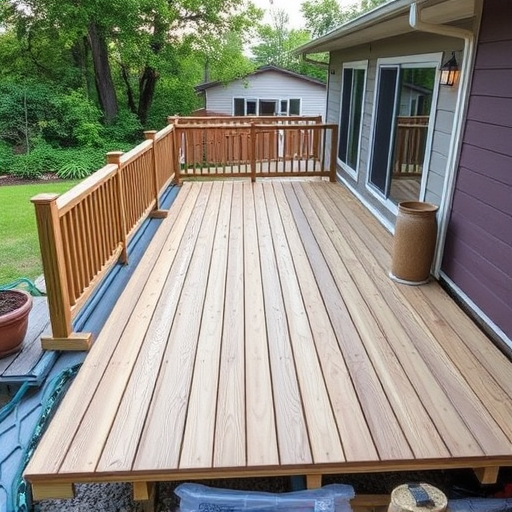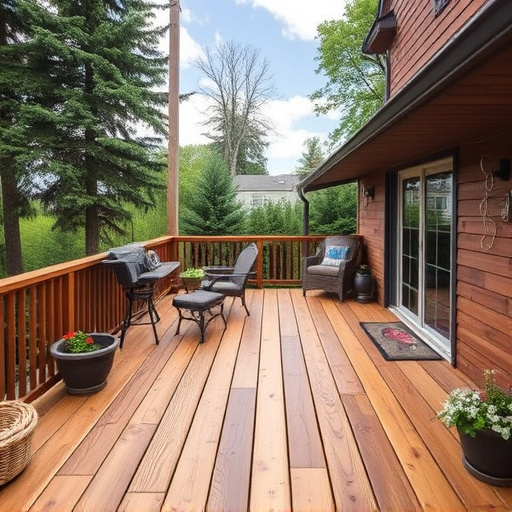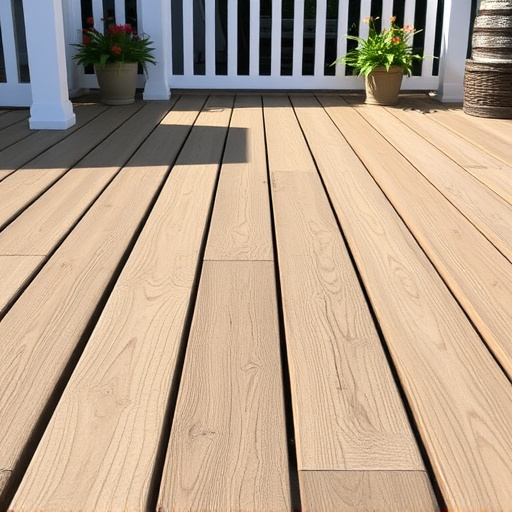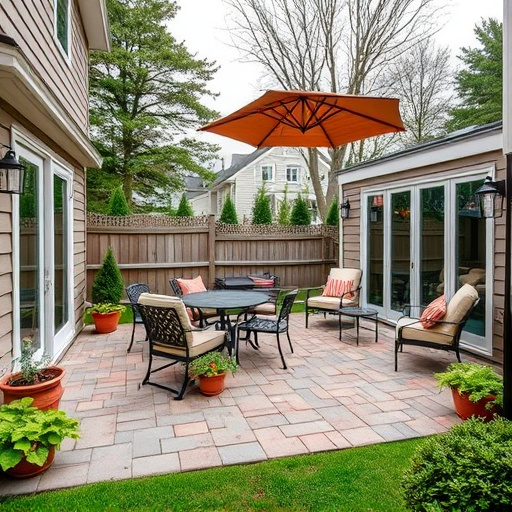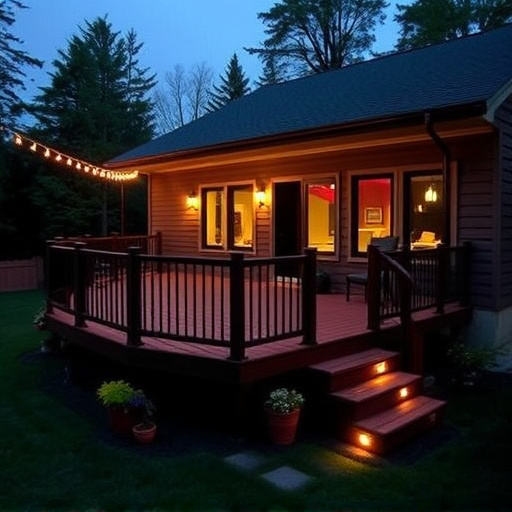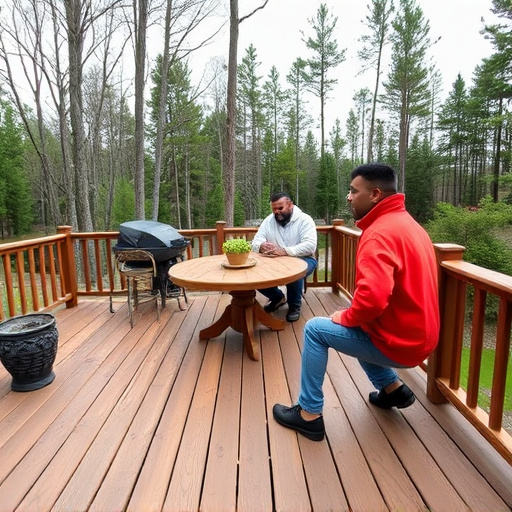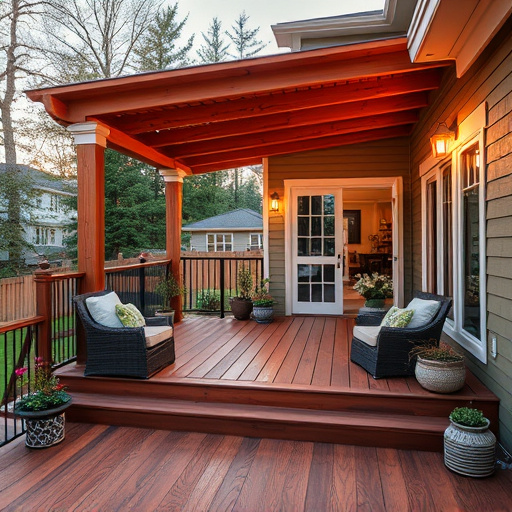Before installing slip-resistant decking, clear and level the ground. Prioritize proper drainage to prevent water pooling. Choose suitable surface materials for safety and longevity, especially in high-traffic areas or near uneven terrain.
Preparing your site for deck builders’ arrival is crucial for a safe and durable deck. Before they begin, ensure the ground is clear and level, facilitating smooth installation. Proper drainage is essential to prevent slip hazards; ensure water flows away from the deck’s surface. For added safety, consider non-slip deck surface options. By implementing these measures, you’ll create a secure and beautiful outdoor space with slip resistant decking.
- Clear and Level the Ground for Installation
- Ensure Proper Drainage to Prevent Slip Hazards
- Choose Non-Slip Deck Surface Options
Clear and Level the Ground for Installation
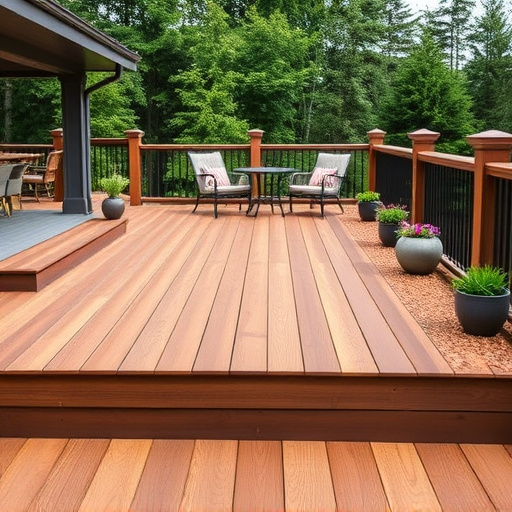
Before deck builders can begin their work, it’s crucial to ensure that the ground is clear and level. This step is essential for creating a solid foundation for your new slip-resistant decking. Start by removing any existing structures or debris on the site, ensuring the area is free from obstacles. Leveling the ground involves filling in any depressions or uneven areas, making it even and stable. You can achieve this using topsoil or gravel to create a uniform base that will support the weight of the deck and ensure its longevity.
A level surface is particularly important for slip-resistant decking, as it guarantees optimal performance and safety. By preparing the ground properly, you’re setting the stage for a high-quality installation, whether it’s for commercial siding or residential roofing projects, even if roof replacement is on the horizon.
Ensure Proper Drainage to Prevent Slip Hazards
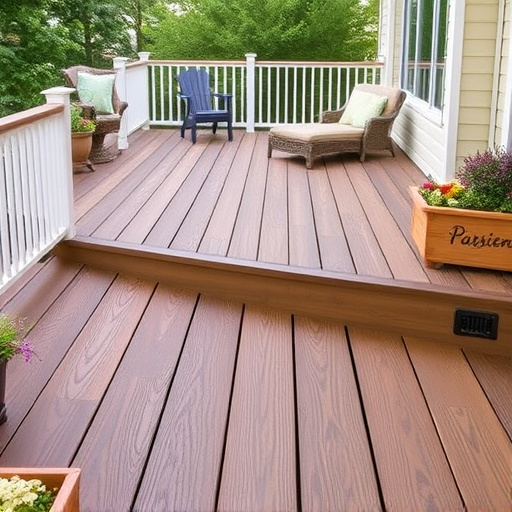
Before welcoming deck builders onto your property, it’s crucial to address safety concerns, especially when it comes to slip-resistant decking. Proper drainage is a fundamental aspect that cannot be overlooked; it plays a vital role in preventing accidents and ensuring a secure environment for both builders and future homeowners. Poor drainage can leave water pooling on the deck surface, making it slippery and hazardous, particularly after rain or snow.
Implementing effective drainage solutions is an excellent way to enhance exterior home improvements. Consider regrading the land around your deck to promote water flow away from the structure. You could also install gutter systems and downspouts to direct rainwater effectively, preventing water from pooling on the decking. Additionally, exploring roofing services that offer slip-resistant materials or coatings can further mitigate risks, ensuring a safer space for everyone involved in the building process.
Choose Non-Slip Deck Surface Options
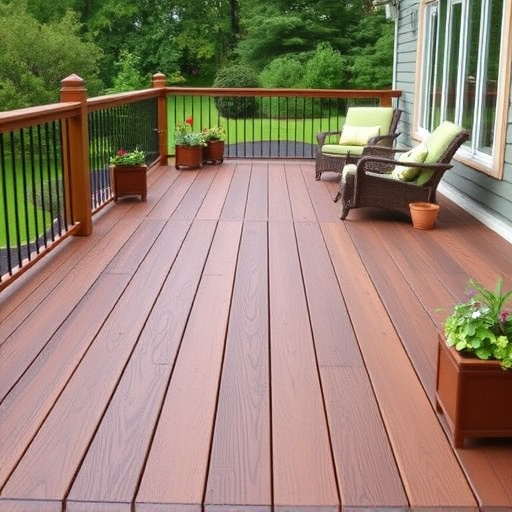
When preparing your site for deck builders, selecting the right surface is paramount to ensure safety and longevity. One crucial aspect is choosing slip-resistant decking options, especially if your deck will be used frequently or by individuals with varying levels of mobility. Anti-slip coatings or textures can significantly reduce the risk of accidents, making your deck safer for everyone.
Consider materials that offer natural grip, such as wood with a rougher finish or composite decks designed with slip resistance in mind. Additionally, when working with commercial roofing solutions or professional siding, integrate slip-resistant features to create a cohesive and safe outdoor living space. This is particularly important if your deck borders areas with high foot traffic or uneven terrain, ensuring a secure environment for all users.
When preparing your site for deck builders, remember that a slip-resistant surface is key to ensuring safety. By clearing and leveling the ground, implementing proper drainage, and choosing non-slip deck surface options, you’re not just enhancing aesthetics—you’re also addressing potential hazards. These simple steps will ensure a secure and enjoyable outdoor space for years to come, making your investment in slip-resistant decking a wise decision.





